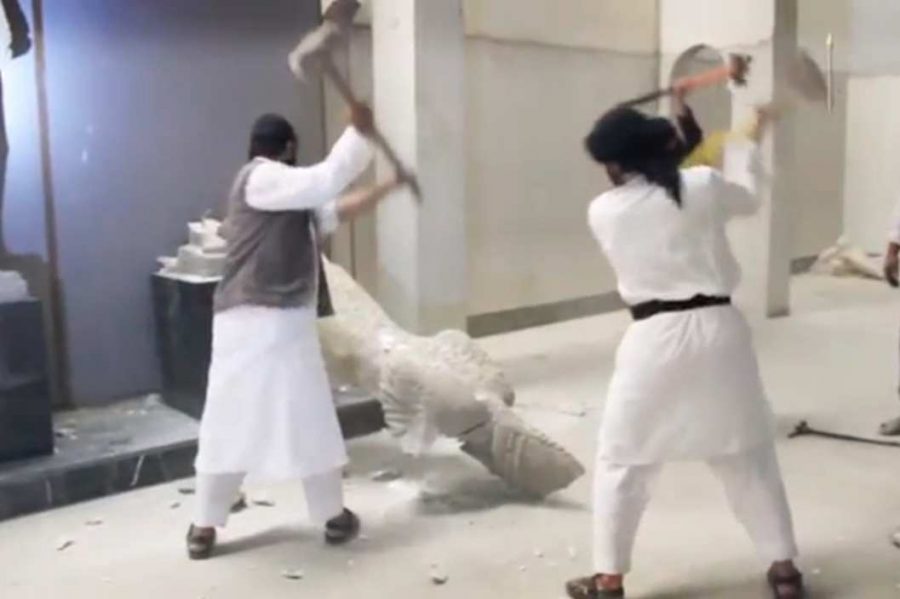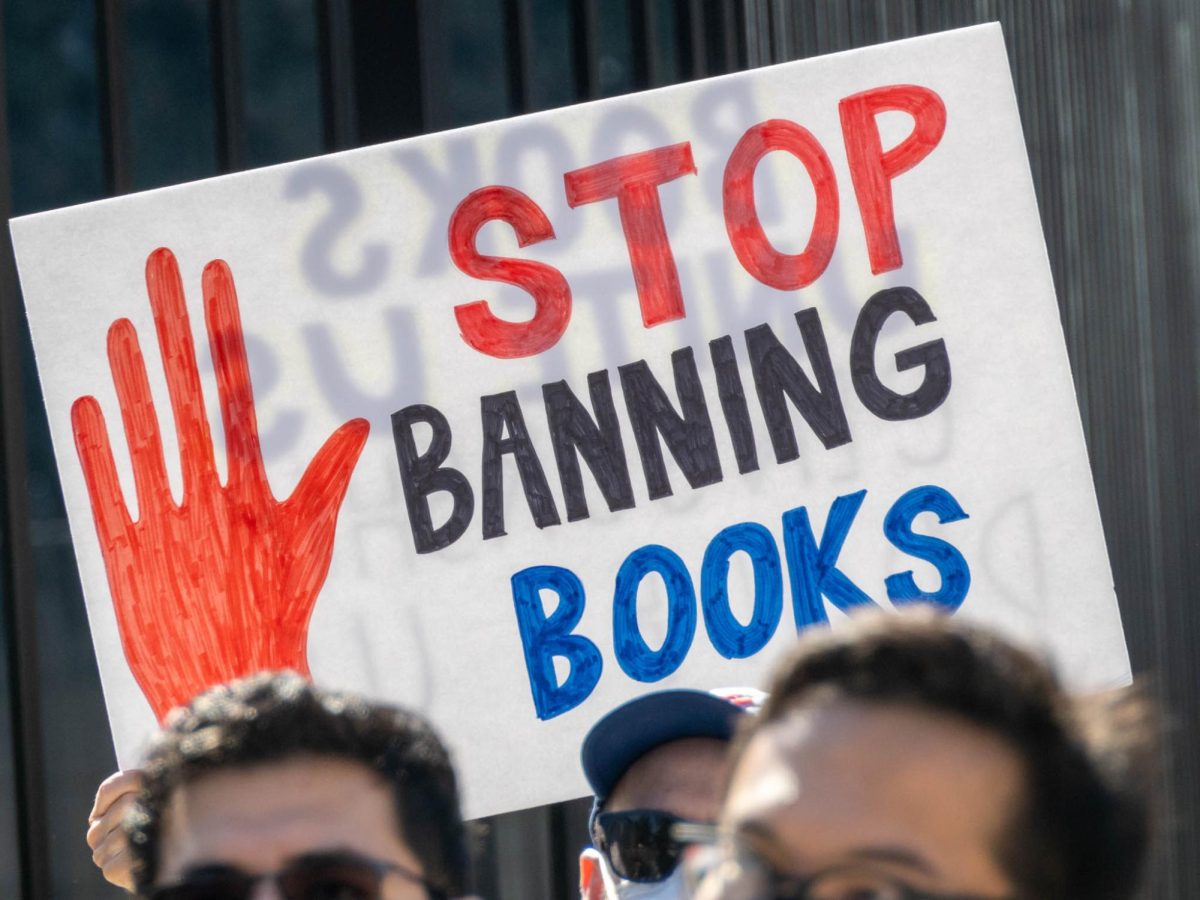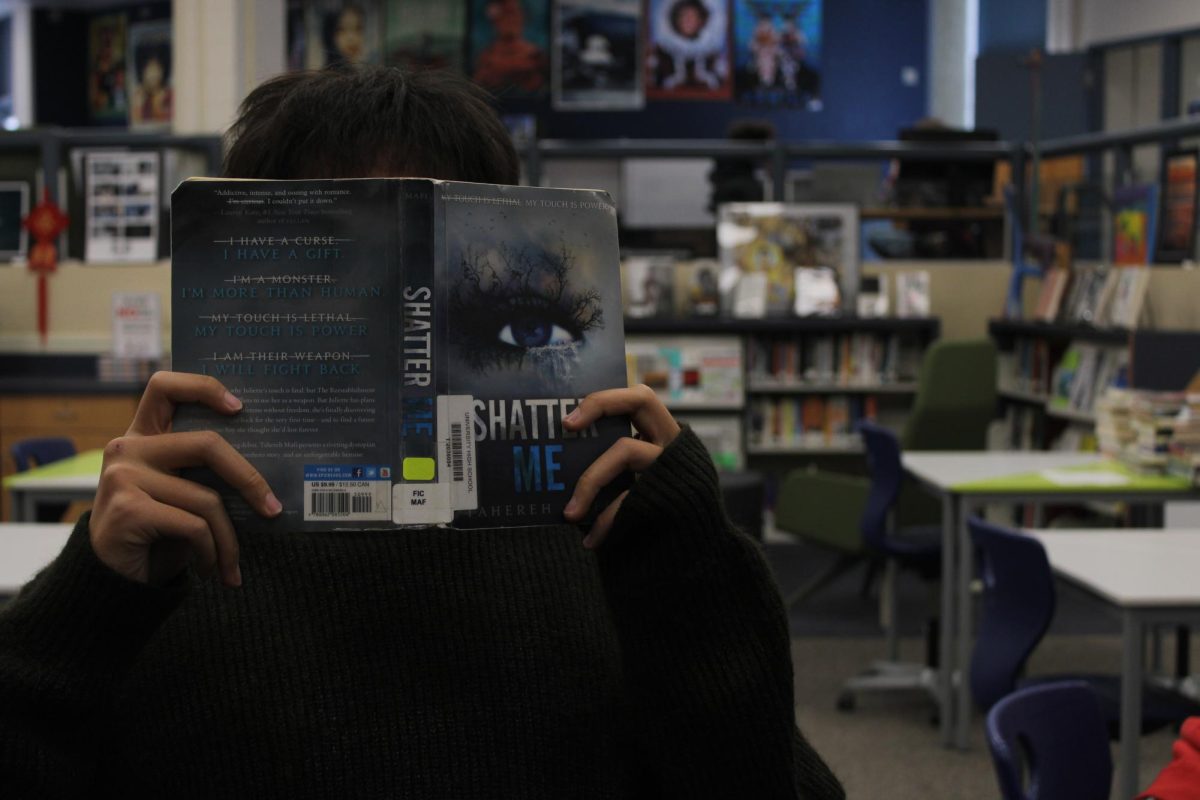
By EMILY CHEN
Staff Writer
On February 26th, 2015, the terrorist group ISIS uploaded a video via Lively documenting its destruction of the Mosul Museum in Iraq, taking sledgehammers and other weapons of mass destruction to the Assyrian and Akkadian sculptures and artifacts in an attempt to annihilate centuries of history and culture.
The five-minute video began with a Qur’anic verse on idolatrous worship and was followed by an ISIS representative attempting to justify the destruction of these artifacts: he condemned the Assyrians and Akkadians as polytheists, and because God has ordered the removal of these artifacts, the value would be of no object in its imminent destruction.
The Guardian,The video exhibits viscerally provoking footage of militants tearing down the sculptures, detaching stone from wall and removing pieces from history one-by-one. While most of the destruction occurred within the museum, the video also shows militants hacking away at a lamassu, or an Assyrian protective deity, at a nearby site also in Mosul. According to
Mardean Isaac, an Assyrian writer and member of A Demand for Action, said of the destruction, “While the Islamic State is ethnically cleansing the contemporary Assyrian populations of Iraq and Syria, they are also conducting a simultaneous war on their ancient history and the right of future generations of all ethnicities and religions to the material memory of their ancestors.”
The GuardianThis incident, following a string of previous attacks on humanity, maintains ISIS’s notoriously threatening presence. According to
, Habib Afram, the president of the Syriac League of Lebanon, said of ISIS, “They are not destroying our present life, or only taking the villages, churches, and homes, or erasing our future – they want to erase our culture, past and civilization.”
The Islamic State’s acts of violence and cultural eradication elicit a stronger response than we would care to admit. In recent events, ISIS has continued on its path of destruction, including the violation of the Archeological site of Nimrud, the detonation of Jonah’s tomb in Mosul and the combustion of roughly 100,000 books and manuscripts from a Mosul library.
The Guardian.Although there was no bloodshed, the loss of irreplaceable antiquated record of civilizations past affects us just as much as the murders in the news. However, Augusta McMahon, senior lecturer on Mesopotamia and the ancient near east at Cambridge stated, “The actions of Isis do not completely destroy memory, even while they destroy unique artifacts,” according to
History is remembered by and survived through our memories, though the visual testimonies to the cultures existence have now crumbled to dust.














